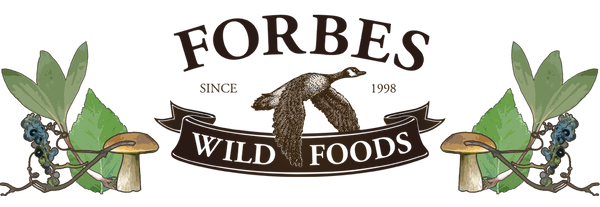Beer Before Hops
•Posted on april 12 2021

To fans of IPA and other piney, zesty, citrusy brews, the notion of beer without hops might seem inconceivable. And yet, for millennia, brewers relied on other ingredients to flavour and preserve their beer. The first definitive reference to brewing with hops is from the 12th century – a good four thousand years after Mesopotamians began perfecting their recipes and techniques for making fermented grain beverages. And even after the use of hops became widespread, brewers in many regions ignored the so-called “Beer Purity Law” (enacted in Bavaria in the 1500’s), and incorporated a wide range of fruits, spices and herbs in their beers. These ingredients served to balance the sweetness of malted barley, and also to prevent spoilage. At the same time, they reflected the local pantry of foraged or cultivated foods. Today, the resurgence of craft brewing is fueling interest in historic beer styles and ingredients, and more drinkers are expanding their conception of what beer “should” taste like.

Hops

Common Mugwort
What are some of the most popular additional flavourings? One key ingredient is Sweet Gale (Myrica gale), a.k.a. Bog myrtle. This wild herb grows widely across North-Western Europe and North America. Rich in essential oils, it holds its perfumed resinous scent well when dried. Sweet Gale has an extensive set of uses including as an insect repellent, a skin treatment, and a healing tea. From Roman times, it – along with heather – was a popular addition to ale made in the Scottish Islands. In what are now Germany and the Netherlands, Sweet Gale was the central component of Gruit – an herb blend prized by brewers. Gruit might also contain wild rosemary, yarrow and mugwort. The blend varied from brewer to brewer, and changed with the season. Currently, Gruit ales are popular with home brewers and are also represented on the commercial market. Beau’s Brewery, located in Vankleek Hill, Ontario has produced a Gruit Series since 2015, switching up the ingredients according to the creativity of the brewing team. Their first Gruit was named Bog Water, in a nod to Sweet Gale.

Sweet gale

Spruce Tips
Edible species of evergreen are another important group of hop alternatives. Their suitability is obvious, given that hops, pine and spruce have many aromatic molecules in common. Just about any tasting note for a hoppy American ale, will use the words piney or resiny. Pine has a long history of use as a source of aroma and bitterness, especially in Scotland. Alba Scots Pine Ale is a modern, readily available example, described as “fragrant, oily, peppery and medicinal”. This brew also contains Spruce tips, a popular traditional beer ingredient in cool regions where Spruce grows. Settlers in North America learned of indigenous use of this nutritional evergreen, and – when the war of Independence disrupted supply of hops – they took to brewing with Spruce. The tradition remained, even when American production of hops overtook that of Europe. Spruce beer is produced in Canada, from coast to coast to coast. Tofino Spruce Tree Ale uses Sitka Spruce; Halifax’s Garrison Brewery makes a Spruce and Fir Beer; and a Yukon Brewing/NWT Brewing collaboration resulted in Tamarack and Spruce Tip Ale. Our local favourite is "Spruced Up, Now What?", a collab between Kensington Brewing Co and the Society of Beer Drinking Ladies.

Juniper beer
The berries of another evergreen, Juniper, are also a historic beer flavouring. While best known as the primary botanical in Gin, Juniper use in brewing is as old as its use in distillation. The popularity of this ingredient was due to its purported medicinal benefits, which included curing stomach ache and even preventing plague! Its astringency and pungent peppery woodsy aroma creates beverages of powerful character. Brewing with Juniper is particularly associated with Nordic countries. Finland’s Sahti is traditional farmhouse ale with a mash seasoned with Juniper berries, and then filtered through Juniper branches. Here in Ontario, Counterpoint Brewing, in collaboration with Indigenous Brew Crew, adds Juniper berries to Celebrating Sisters, a bold, earthy, spicy Amber Ale.
The notion that beer should contain only 4 ingredients (grain, hops, water and yeast) seems nonsensical given the creative options that have shaped the culture of beer since its origins, and that continue to bring enjoyment today.
More Posts
-
Get to know the mos...
Autumn is the absolute best time for mushrooms, after a year of growth the cool nights trigger mycelium to shoot out new fruiting bodies and the fo...
Read More




Comments
0 Comments
Leave a Comment